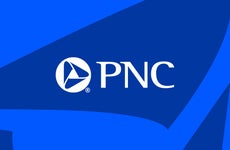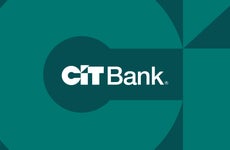CDs
Searching for the best CD rates? Bankrate.com offers rates, comparison tools and news on certificates of deposit.
CD Basics
Latest Articles
-

Current CD rates for April 2024
Check out the latest CD rates from Bankrate’s weekly survey of banks and thrifts.
3 min read Apr 25, 2024 -

Here’s how much investing $25,000 in a CD right now could earn you in 1 year
If you have $25,000 to invest in a CD right now, here’s how much you could earn.
4 min read Apr 22, 2024 -

Ally Bank CD rates
Everything you need to know about the online bank’s CD rates.
2 min read Apr 16, 2024 -

American Express CD rates
Here’s everything you need to know about the bank’s rates.
1 min read Apr 15, 2024 -

PNC Bank CD rates
Everything you need to know about the bank’s yields on CDs.
2 min read Apr 12, 2024 -

Chase CD rates
The big bank offers a range of CD terms, but you can find much higher APYs elsewhere.
1 min read Apr 12, 2024 -

Wells Fargo CD rates
Wells Fargo offers three standard terms of CDs online. Here’s what you need to know about minimum balances, fees and more.
1 min read Apr 11, 2024 -

-

Bank of America CD rates
Looking for a CD? Here’s what the big bank will pay you.
1 min read Apr 09, 2024 -

5 things to know before opening a CD
A CD often earns a competitive, fixed rate. Here’s what to know before opening one.
7 min read Apr 09, 2024 -

Synchrony Bank CD rates
Everything you need to know about the online bank’s CD rates.
2 min read Apr 05, 2024 -

TD Bank CD rates
Here’s everything you need to know about TD Bank’s CD rates.
2 min read Apr 05, 2024 -

U.S. Bank CD rates
Here’s everything you need to know about the bank’s rates.
2 min read Apr 05, 2024 -

Marcus by Goldman Sachs CD rates
Here’s everything you need to know about the online bank’s CDs.
1 min read Apr 05, 2024 -

-

6 top tips for choosing the best CD for your money
CDs can be a useful tool to save, but make sure to shop around for the right kind and bank for you.
4 min read Apr 02, 2024 -

How promotional (bonus) CD rates work
These CD specials help you earn more money on interest without taking on risk.
3 min read Apr 02, 2024 -

Why now might be a good time to consider longer-term CDs
If you’ve been thinking of getting a longer-term CD, you may want to make a move.
4 min read Apr 02, 2024 -

Brokered CDs: What they are and how to buy them
Here’s everything you need to know about brokered CDs.
6 min read Apr 01, 2024 -

How to renew a certificate of deposit (CD)
Better to let a CD automatically renew or cash it in? Here’s a guide for those looking to renew.
4 min read Mar 28, 2024
Related Topics
Helpful Links
- CD rate forecast for 2024
- Daily CD rate news
- Current weekly CD interest rates
- What is a certificate of deposit?
- Boost earnings with a CD ladder
- Pros and cons of CD investing
- Choose the right type of CD for you
- When early withdrawal is worth it
- How much to keep in a CD
- Best 3-month CD rates
- Best 6-month CD rates
- Best 1-year CD rates
- Best 5-year CD rates
- Best 10-year CD rates
- Best IRA CD rates
- Best no-penalty CD rates
- Best credit union CD rates